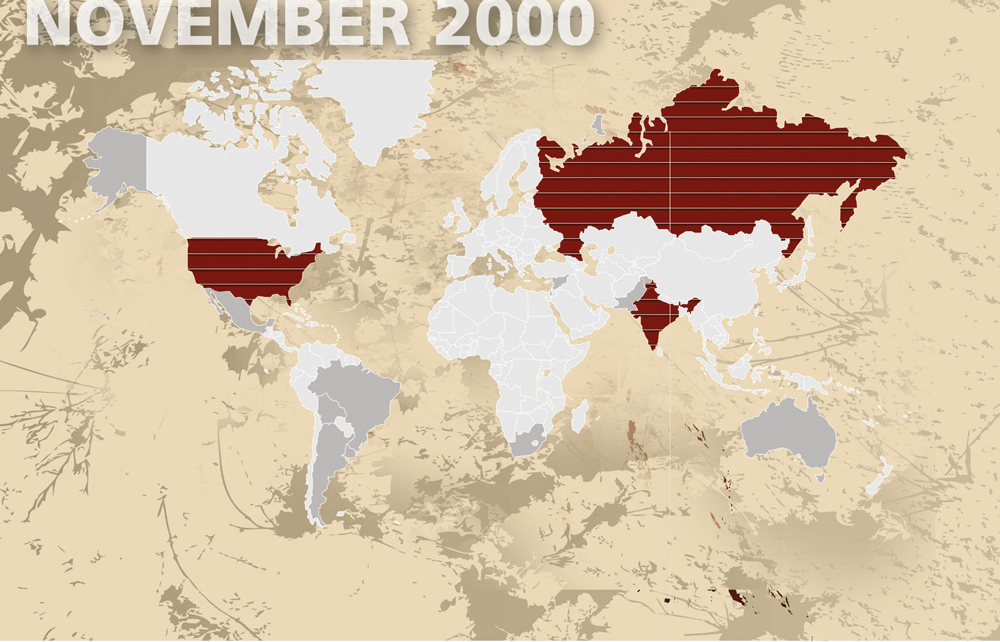THE ROVING DIPLOMAT
TRIBUTE series
HIGH ON INDIAN DIPLOMACY
Why the heights to which Indian diplomacy has risen is commendable
The Commonwealth’s finance ministers have been concerned about the limited progress in writing off indebtedness and the need for measures to render the international financial system less vulnerable to recurrent financial crises. They’re also concerned about the limited contributions from G7 and other rich nations to enhance global stability.
At this time of heightened worry over the problems of the developing world as highlighted by the UN Millennium Summit and other subsequent conferences, the latest World Development Report of the World Bank is a timely reminder of the needs of the hour.
In the words of the President of the World Bank: “The report seeks to expand the understanding of poverty and its causes, and sets out actions to create a world free of poverty in all its dimensions.”
The essence of this voluminous report is that it has identified three priority areas – viz. opportunity, empowerment and security, which must be addressed by developing countries. The report recommends these as priority areas that will serve as a framework for states in developing poverty reduction strategies according to their circumstances.
Moreover, the report also provides some alarming statistics on prevailing poverty levels across the world. It claims that 2.8 billion people are living on less than US$ 2 a day – and of these, half live on a dollar a day.
The report’s conclusion is that if the developing world and international community work together to combine these insights with real resources – both financial, and those embodied in people as well as institutions – the 21st century will see rapid progress in the fight to end poverty.
At a regional level, a recent event that has implications for South Asia was Prime Minister Atal Bihari Vajpayee’s state visit to the US where the Indian PM was accorded full honours. He hailed the opportunity to address the US Congress as a historic moment in Indo-US ties.
In his keynote address to Congress, Vajpayee focussed on the subject of globalisation as seen by the developing world and the need to reconsider whether it is the most equitable path to progress. He tabled a landmark proposal to hold a comprehensive dialogue at a global level on development in New Delhi.
Another issue which arose was that of India’s nuclear ambitions and US pressure that it should sign the Comprehensive Nuclear-Test-Ban Treaty (CTBT). In his address, Vajpayee explained that while he appreciated the US’ concerns, India too has to think about its own status as a regional power.
The real significance of this visit, which was acknowledged by both sides, is that it opened a new era in their relationship following decades of the Cold War freeze. US officials have expressed the view that Indo-American relations are at their best in 50 years – and according to statements made by candidates in the forthcoming presidential election, there’s no going back on relations between the two states.
At this juncture, when India can take pride in its impact on the United States and the new vistas it has opened up, there’s another similar relationship in the offing. And it is one that could enhance India’s international image while also posing sensitive problems.
Russian President Vladimir Putin’s visit to India has as its objectives a strengthening of bilateral ties and signing accords on a number of key areas, which include information technology, pharmaceuticals, civil aviation, biotechnology and high technology.
The relationship also encompasses a strategic partnership on military cooperation, a joint nuclear policy and arms deals such as the purchase of 300 Russian T-90 tanks by India. The visit created what is called a ‘3D system’ for joint action between the two countries, which has also initiated the establishment of a mechanism for dialogue, discussion and speedy decision making.
India’s policy of intensive cooperation with the two superpowers has raised pertinent questions about its global implications as well as its impact on the subcontinental nation’s standing. In the first instance, it would invest India with the status of a great power and this would be affirmed by its anticipated admission to the UN Security Council as a permanent member.
One cannot but admire the heights to which Indian diplomacy has risen in effecting this power balance – and in the process, making itself a redoubtable global force with international and regional implications.
BY The late Deshamanya Dr. Vernon L. B. Mendis




